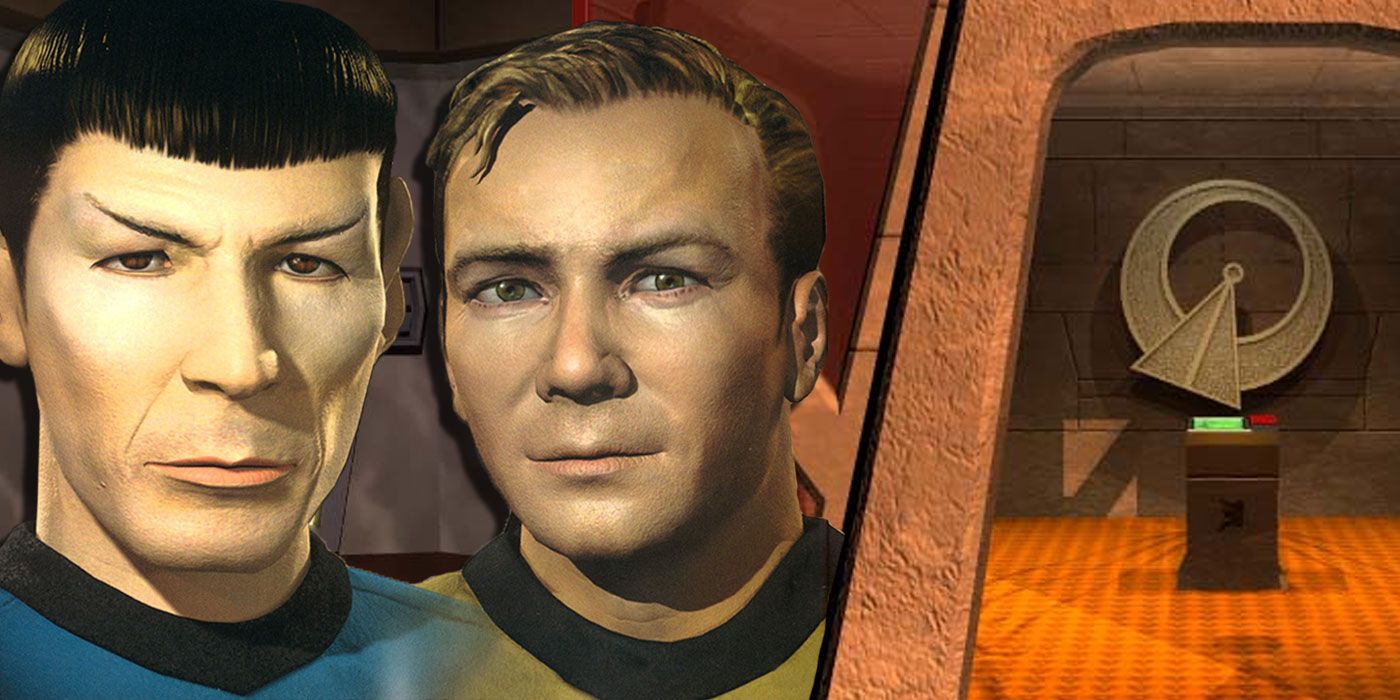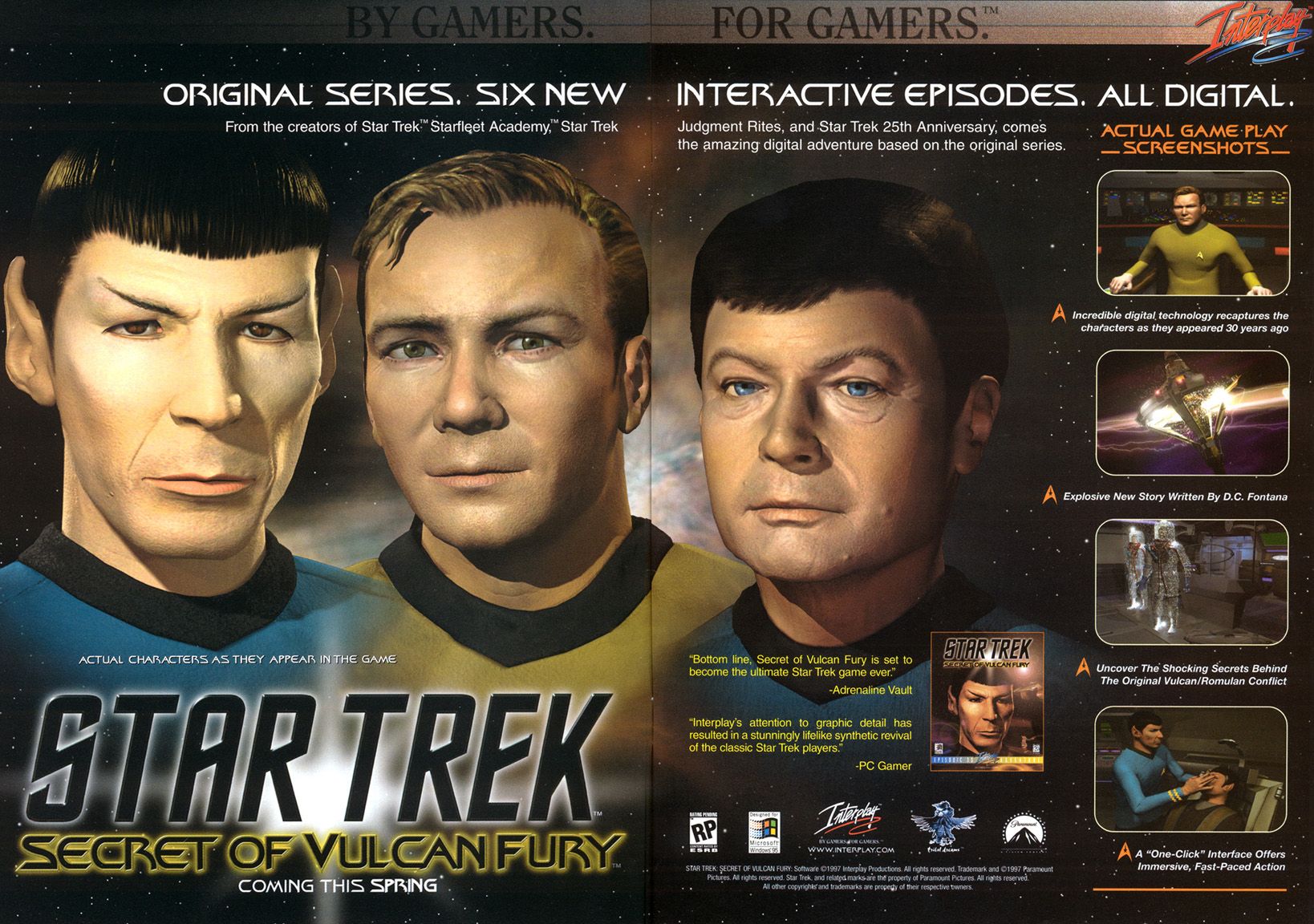
Nearly 60 years after its release, Star Trek remains a massive media franchise, with TV shows like Star Trek Discovery doing big business and rumblings about new movies regularly popping up in headlines. Star Trek video games have died down in popularity in recent years as the franchise shifts its focus to other mediums, but that wasn't always the case.
Star Trek was once a hot property in gaming thanks to a series of successful adventure games and space simulation titles. One proposed game that aimed for a 1997 release date would have revolutionized not just Star Trek as a franchise but video games as a whole. Today, though, that game is lost to time and will never see release.
In the early '90s, Star Trek was flourishing. A series of high-profile adventure games spun out of this success and quickly became hits thanks to the effort of Interplay. Best known for their work on titles like the original Fallout and Baldur's Gate, Interplay wowed fans with back-to-back adventure titles: 1992's Star Trek: 25th Anniversary and 1993's Star Trek: Judgment Rites.

In 1997, Interplay announced an ambitious new project. Star Trek: Secret of Vulcan Fury was to be a groundbreaking game, boasting stunning, fully 3D graphics with incredible, lifelike detail. This doesn't sound like much by today's standards, but at the time of the announcement, the most advanced games on the market were titles like Final Fantasy VII and GoldenEye 007. Even the idea of using CGI to fully render a film was still new to the mainstream public; Toy Story had only been released two years earlier, and the next major CGI releases would be Antz and A Bug's Life the following year. The idea of an entire game with lifelike 3D graphics throughout seemed to be a pipe dream.
It didn't stop there, though. Secret of Vulcan Fury would have been a landmark story, as it finally detailed the long-simmering rivalry between the Vulcan and Romulans, something which had not been touched on much at the time. The script was being pioneered by the legendary D.C. Fontana, a writer on Star Trek who had worked on classic Trek episodes like "Charlie X" and "The City on the Edge of Forever." To bring the game to life, the entire cast of the original series would be present in both likeness and vocal performance. It seemed like a dream come true for Star Trek fans hungry for a new adventure with the original Enterprise crew.
Those same fans were understandably surprised when the November 1997 release date came and went. Time and time again, Secret of Vulcan Fury was delayed a few months at a time, all the way to February 1999. Interplay had tried to drum up support by announcing the game early, believing it would be on a timetable similar to its other Star Trek titles. However, it had not realized the scale of the project. The short trailer Interplay had so proudly shown off made it seem as if the game was nearly complete when, in fact, that trailer was all it had.
The process of recording the gameplay was laborious. Clay face models of the Star Trek cast had to be sculpted, then digitized. Each model was then painstakingly rendered, modeled and lip-synced to an existing voice track. It took hours to produce even a single second of footage, despite Interplay hiring every 3D animator they could get their hands on. In short, they were trying to make a movie with the production quality of a Hollywood blockbuster but on a shoestring budget with '90s technology. In a 2016 interview with No Don't Die, Interplay founder Rebecca Heineman said, "No one had ever actually sat down to say, "How much would this cost per minute to generate this footage?" They made a model of Spock in 3D. They rendered it, they did some human facial motion. They said, "This is great." They greenlit the project without anybody ever actually saying, "Well, we did this demo by using 50 computers in an array in the backroom, and it took an hour to render two seconds of scenery...The game's going to use approximately two hours of footage, so if it takes us about an hour to generate a second of footage with 50 computers, multiply that out -- that's a lot of money and CPUs in order to render two hours of footage."
The delays and budget problems continued to pile up until February 1999, when the decision was made to cut the project. Secret of Vulcan Fury was reportedly still years from being finished at the time of its cancelation, with only around 5% of the game having being completed. An attempt was made to sell the project to a new developer, but given the time and cost of such a project, no one bought in. Today, knowledge about the game exists in a sort of limbo, to the point that many have difficulty pinpointing precisely how much of the game was produced.

Scripts for the game have appeared on second-hand markets and appear authentic; however, they're all missing large portions of pages and are far from complete. This is likely due to a last-ditch effort to salvage the project by rewriting it. Originally, the point of view was going to pivot between different crew members, but it was later decided to make Kirk the sole focus to streamline development. D.C. Fontana expressed her desire at a 2007 convention to try and salvage the story as a novel but it was seemingly never approved by the rights holders. Fontana's passing in 2019 makes such a release unlikely to ever happen.
Perhaps most tragically lost to time, though, is the voice track for the game. While it was debated for the longest time if recordings had even taken place, it was finally confirmed years after the cancelation that the original cast had recorded most, if not all, of their dialogue. Small clips of these sessions that were preserved for personal demo reels exist today, but they're all that's left. According to one developer on a now-defunct Interplay message board, the recordings and the existing game files were lost due to backup failure. These voice recordings mark the final time the entire TOS cast worked on a project together. In fact, DeForrest Kelley's sessions are said to have been cut short due to concerns about his health, with a portion of McCoy's dialogue recorded by Maurice LaMarche, best known for voicing The Brain of Pinky & The Brain, doing an impression of the actor. Kelley would pass away in June 1999, just a few months after the project was officially canceled.
While it may have been too ambitious for the time, it's hard to deny the appeal of a game like Star Trek: Secret of Vulcan Fury. The pedigree of talent alone involved in the project made the game the ultimate culmination of all things The Original Series. Sadly, barring a miraculous discovery, it will only ever be lost media now, relegated to interviews with developers and whispers on Star Trek forums. Star Trek has continued to flourish in video games, thanks to MMO titles like Star Trek Online and mobile titles like Star Trek Fleet Command, but one can only imagine the excitement that would come about from seeing an adventure game like Secret of Vulcan Fury resurrected for modern consoles.
0 Comments